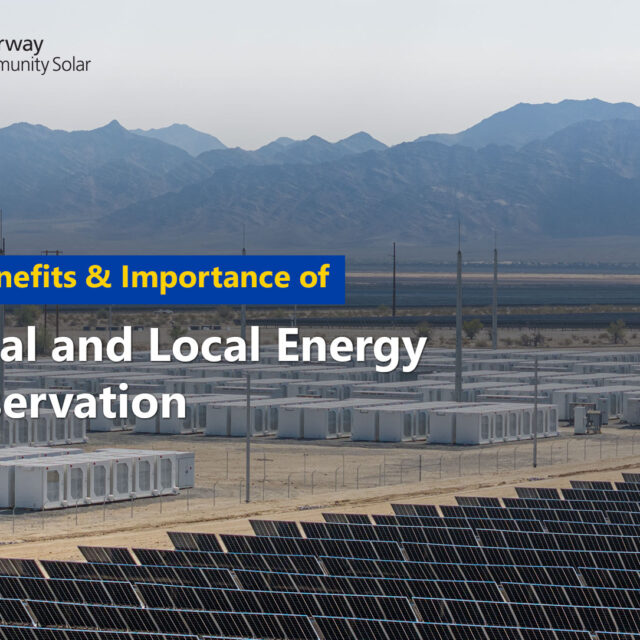
 Have you ever actually touched a solar panel? Although we’ve all seen them on roofs or roadsides, for many of us solar panels still give off a future-tech aura, unlike the more common place technologies like outdoor air conditioning compressor units that no one bats an eye at. Even how solar panels work sounds like it comes from science fiction.
Have you ever actually touched a solar panel? Although we’ve all seen them on roofs or roadsides, for many of us solar panels still give off a future-tech aura, unlike the more common place technologies like outdoor air conditioning compressor units that no one bats an eye at. Even how solar panels work sounds like it comes from science fiction.
But solar panels are heading in the direction of becoming the new norm, and any surprise when you see them should start dissipating over the next decade thanks to new construction codes popping up around the country. These codes are making solar panels, and the experience of living with solar, a standard part of our nation’s buildings. What started as a trickle turned into a deluge in late 2018, when California—the most populous U.S. state—officially became the first to mandate that in 2020, all new homes must be outfitted with solar arrays.
“This new policy is certainly historic,” said Abigail Ross Hopper, president and CEO of the Solar Energy Industries Association (SEIA), a Washington, D.C.-based trade association. “California has long been the solar leader in the United States and it has paid dividends both economically and environmentally. Now, Californians are poised to take it a step further, recognizing that solar should be as commonplace as a front door welcoming you home.”
The Golden State’s major move follows similar, albeit far-smaller-scale requirements in places including South Miami, Florida (population 10,281) and Watertown, Massachusetts (population 31,915). In December 2018, Watertown became the first town in New England to roll out the solar panel standard for all new commercial buildings and renovations of older buildings larger than 10,000 square feet.
Incorporating solar as a matter-of-course in new construction will help “normalize” the technology for a new generation of homeowners, renters, landlords, and business owners. This normalization will be a key step toward familiarity, comfort, and ultimately greater adoption of solar.
“When cellphones were first developed, it was quite a few years before they became part of the mainstream. Now, people can’t live without them,” said Ross Hopper. “Policies, like this one in California, will help normalize solar to the point where houses and businesses not using solar energy will cause you to do a double take.”
Solar Dollars and Sense
 The California Energy Commission (CEC), a state energy panel, unanimously voted forward the proposal in May 2018, and then the California Building Standards Commission unanimously issued a final seal of approval later in December. The rule will apply to most single-family homes, along with condominiums, apartment complexes, and multi-family residential buildings topping off at three stories.
The California Energy Commission (CEC), a state energy panel, unanimously voted forward the proposal in May 2018, and then the California Building Standards Commission unanimously issued a final seal of approval later in December. The rule will apply to most single-family homes, along with condominiums, apartment complexes, and multi-family residential buildings topping off at three stories.
The solar panel mandate is expected to add between $8,000 to $10,000 to the cost of a new home, a drawback highlighted by critics of the policy. That cost increase works out to about $40 per month on a typical 30-year mortgage. Crucially, however, that $40 is offset by an estimated $80 in energy savings per month on heating, cooling, and lighting, the CEC calculated, equating to $19,000 in savings over the mortgage span. The CEC projected that Californians affected by the construction standard will use 53% less energy in their homes than if the status quo had remained, adding up to savings of around $1.7 billion over the next three decades.
All told, about 100,000 new homes starting in 2020 will now come with built-in solar, according to the CEC. That represents a more than six fold jump from the circa 15,000 solar homes built per year currently, which come about because of solar standards in effect in at least seven Californian cities, such as San Francisco.
Community Solar Lends a Hand
 Not every new residential building, however, will prove ideal for solar panel installation. Tree cover, roof angles, skylights, and more can make a solar system setup complicated and uneconomical. For those places where solar panel arrays can’t go, the approved solar mandate stipulates efficiency upgrades that offset higher energy usage, or the ensuring of tenants’ access to community solar facilities.
Not every new residential building, however, will prove ideal for solar panel installation. Tree cover, roof angles, skylights, and more can make a solar system setup complicated and uneconomical. For those places where solar panel arrays can’t go, the approved solar mandate stipulates efficiency upgrades that offset higher energy usage, or the ensuring of tenants’ access to community solar facilities.
Community Solar, sometimes called shared solar, is a concept that is taking off in many regions of the country, with significant projects underway from Clearway in Massachusetts, Minnesota, New York, and coming soon to Illinois. For people who cannot or prefer not to go solar with installations on their homes and businesses, Community Solar gives them the option to subscribe at no cost to an offsite solar farm, supporting its clean energy operations while also receiving solar credits that can help reduce their electricity costs.
“Community solar is an excellent option for American households and businesses that do not have access to solar because they rent, live in multi-tenant buildings, have roofs that are unable to host a solar system, or experience some other mitigating factor,” said SEIA’s Ross Hopper. “Many states have had success with these programs.”
Overall, the California solar mandate could well turn out to be a model for states to follow, making solar an everyday thing, whether through rooftop solar panels or by connection with a Community Solar farm.
“While some states may not be ready to take this step, this is a precedent-setting policy that can be replicated elsewhere,” said Ross Hopper. “Incorporating solar energy into new construction will lead to lower energy bills, less strain on the power grid, and cleaner air.”









